
Review on Aoryoa Paddle Board,106 Inflatable Accessories by Andy Tran

A beginner/intermediate paddle board with simple, electronics-inspired graphics
The size of the Aoryoa iSUP with chunky branding sets it apart from the similarly sized DvSport Sunshine and makes it more advanced than the popular Runwave Kohala. In other words, it should appeal to both beginners and intermediate/intermediate users. I love the simple, minimal graphic design, but it also reminds me too much of a circuit board. WHY NOT RENT? Typical SUP rental in our area was $30 per person for two hours. So counting a $300 inflatable SUP equates to $10 rental for up to 20 hours of use. It made sense for us to buy one instead to save money in the long run. What Makes Aoryoa a Great Beginner/Intermediate Board? Are (solid) epoxy SUPs more durable than inflatable ones? As it turned out, no. See Pros and Cons for more details. BENEFITS - Light enough to be carried to remote wilderness areas, but is a little heavier at around 23 pounds - Less expensive than hard boards - Deploys/inflates quickly - It took me 20 minutes to read the instructions and the instructions when I first got on the iSUP to read details. In the following times, the preparation of the paddle took about 9-11 minutes. Consider using an electric pump for faster deployment. See TIPS for more details-- Compact and portable-- Easily folds down to the size of a sleeping bag--- Simply deflate, remove certain parts, protect fins and unroll-- Takes up less space than hard boards-- Fits in small car, is easier to transport and can be checked in on an airplane (and helps save on rent) - Carrying handle in the middle of the board for one-handed transport - More durable than rigid boards as they don't scratch or rattle if dropped making them a little better suited for rocky, wild adventures-- It didn't make sense at first: why is an inflatable board more durable than a rigid board?--- Rigid boards are more prone to cracks, scratches, and holes that are repaired immediately have to. who knew - Causes fewer injuries than rigid boards. Inflatable SUPs are more durable than rigid boards as they don't scratch or rattle when dropped, making them a little better for rocky, wild adventures a little more nimble and advanced than the Runwave Kohala-- Good transitional board for more experienced beginners-- Inflatables cause less fatigue- Front bungee tethering for holding gear (e.g. water bottles, lunches, jackets, sunscreen) - Excellent stability when inflated 6" thickness, 32" width, 10' 6" length - Volume not stated. Um to get an estimate, take about 24% of the dimensions to account for the irregular shape: 304L -- Narrower width, shorter length makes it more nimble than Runwave -- Added volume provides more stability and weight support compared to rigid boards -- - According to the manufacturer, it can withstand loads of up to 330 pounds - Due to its size, the board is ideal for recreational, beginning advanced / advanced rower. Can be used for surfing small waves, although not very manoeuvrable given its size. From my research, inflatable boats can last 10 years or more depending on maintenance, storage conditions, and other factors. The foam on the back is curved for more seating comfort. The kit includes several accessories. tote bag/backpack. hand pump. 3 fins (1 detachable). Two side fins make it more stable - Floating, 3-piece, adjustable-length aluminum paddle - Harness leash with key pocket - VS repair kit - Slightly heavier, about 23 pounds - Takes time to inflate or deflate - Rigid boards start right out of the box and require little without prep -- Lasted 12-16 minutes to deflate, clean, roll and pack -- No additional D-rings already attached to convert to a kayak with one or two additional seats (for tandem kayaking). Search the web for "YUENX iSUP to kayak conversion" to find out how easy it is to add your own. Requires a pump. real workout - not as good or as fast as hardboards, making them not as well suited to competitive racing, although the performance gap between SUP and iSUP is closing - iSUP is puncture resistant but not puncture resistant - foam on the back has a bulge (for more seat comfort), which makes it difficult for me to do back-step tricks on the PREP TIP N- Make sure the valve is clean and free of dust and debris. Inflate the Aoryoa iSUP to 12-15 psi (15 psi is best). Leave in the hot sun, inflate to 12-13psi only and let the heat build up the internal pressure. The manufacturer claims that the pressure can be as high as 25psi. If using an electric pump, inflate to 10-12psi and manually inflate the rest to 15psi. Pressure on the board before going out. Before first use, let the board inflate for a day and see if it loses pressure. If this is the case, read the guide on how to find the leak. If the board is left in the sun/heat the pressure can increase and in the cold the pressure can drop. A seat belt is REQUIRED to hold the board. The absence of any of them could separate the board from you by wind or current, forcing you to swim all the way to shore. A leash can SAVE YOUR LIFE! - You should always have a safety leash with you -- Attach the ankle cuff to your less dominant leg and the other end to the loop at the end of the board -- Keeps the board close to you in the water in the event of a fall, preventing waves or waves from forming move wind. Do not drag paddleboards on the sidewalk as this can cause punctures and damage. The board has a carrying handle in the middle. Lift the board on its side so the handle is facing away from you (the bottom of the board is facing you) and grab the handle to lift the iSUP off the ground. BOARD SELECTION The following are general guidelines for choosing the right board. I am not a professional SUP rider and I suggest you visit a paddleboard shop for advice on what is right for you. The wider the board, the more stability is added (useful for beginners or tandem riders), but more difficult to paddle - 31" and wider are ideal for beginners and tandem riders - 30" or narrower, increasing due to less resistance on the board Mobility and speed suitable for surfing - The longer the board, like a snowboard, the easier it covers the distance - 12ft and up is suitable for racing - 9ft - 11ft is great for recreation - 9ft or less is suitable for surfing -for more mobility- The thicker the board, the heavier the rider it can carry-- 5" Better or thicker-- 4" perfect for kids and light paddlers. Better too light than too heavy for the board- Than the larger the board volume (measured in liters), the more weight and height the rider can carry and be more stable due to the increased buoyancy gliding tee---Consider---total weight including food , Water, Equipment and Companion --- Your skill level and age ---- Aquatic environment and activity type-- Check the SUP Volume Calculator (1 kg = 2.2 lbs) --- Not all boards with the same volume are created equal . Your concavity and overall shape affect the board's performance, among other things --- Beginner: Total Weight x (1.1 to 1.4) ---- If you weigh 170 pounds and plan to feed a 50-pound kid with a 10-pound meal and to bring water, total weight 230 pounds. The volume should be between 253L and 322L --- Intermediate or Intermediate: Total weight x (0.9 to 1.1) - 200L and above, generally ideal for recreational and beginner use. Remember that after rowing a few times you can move forward quickly. in your skills. My personal recommendation in everything I do is to always use something that is at least a level above my current skill level. CONCLUSION The Aoryoa, with its wide and short form factor, is a very stable, beginner-friendly inflatable that is advanced enough for the person who wants to move up to the intermediate level. Its approximately 304L volume, 6" thickness and 330lb max weight capacity can accommodate two adults, but make sure the board is fully inflated so a kink or bowl doesn't affect paddling efficiency. Like every other iSUP and hard SUP I've used over the past year, paddling in the water has brought lots of joy, memories and much-needed exercise in a social distancing world amid the COVID-19 pandemic and the fear of the water, every time wanting to walk with me, even agreeing, learning how to jump into the sea and turning around to swim safely with a life jacket. I prefer the slightly higher performance and nice graphic design of my DvSport than this one. Buying an inflatable standing surfboard was an eye opener and saved me money over renting. It was much more stable, VERY light and comfortable. You can stand on them longer than on hard boards, but I also felt prouder to take care of something that was mine. In addition to taking up less space in the garage, inflatable boats are more compact for transporting in the trunk of a car. My best friend and I said we should have bought it a long time ago instead of spending so much money renting it, but other than that I'm glad we waited: technology has improved and prices have come down a bit . Happy fun days ahead!
- Weight
- Clarity
New products
Comments (0)
Top products in 🏄♂️ Water Sports

Quick And Easy Ding Repair For Paddleboards And Surfboards With SOLAREZ UV Cure Epoxy Resin Kit!

44 Review
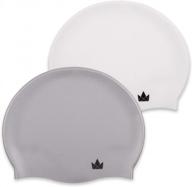
2 Pack Of The Friendly Swede Silicone Swim Caps - Perfect For Men, Women & Kids With Short To Medium Hair!

43 Review
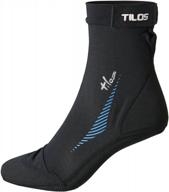
Protect Your Feet From Hot Sand & Sunburn With Tilos Sport Skin Socks For Adults And Kids!

43 Review
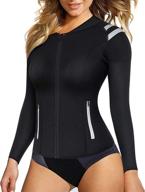
Women'S 2Mm Neoprene Wetsuit Top With Long Sleeves And 2 Zipper Pockets - Ideal For Swimming, Diving, Surfing, And Boating - By CtriLady

47 Review
Another interesting products

Hornady Black Diamond By Umarex - Improved Product Name For Enhanced Search Engine Optimization

28 Review
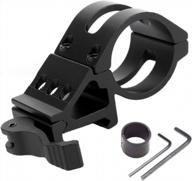
ALONEFIRE Offset Flashlight Mount For Picatinny Gun Tactical LED Torch - Sports Outdoors Hunting Fishing Shooting Airsoft Guns Accessories Sights Optics Scope

24 Review
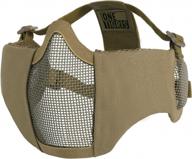
6" Foldable Half Face Airsoft Mesh Mask With Ear Protection And Military Tactical Lower Face Protection By OneTigris

41 Review
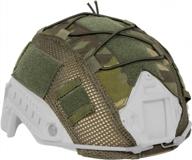
OneTigris Multicam Helmet Cover For Fast Helmets In Size M/L And L/XL - Protect Your Headgear With Cloth Cover In Multicam Print

31 Review

